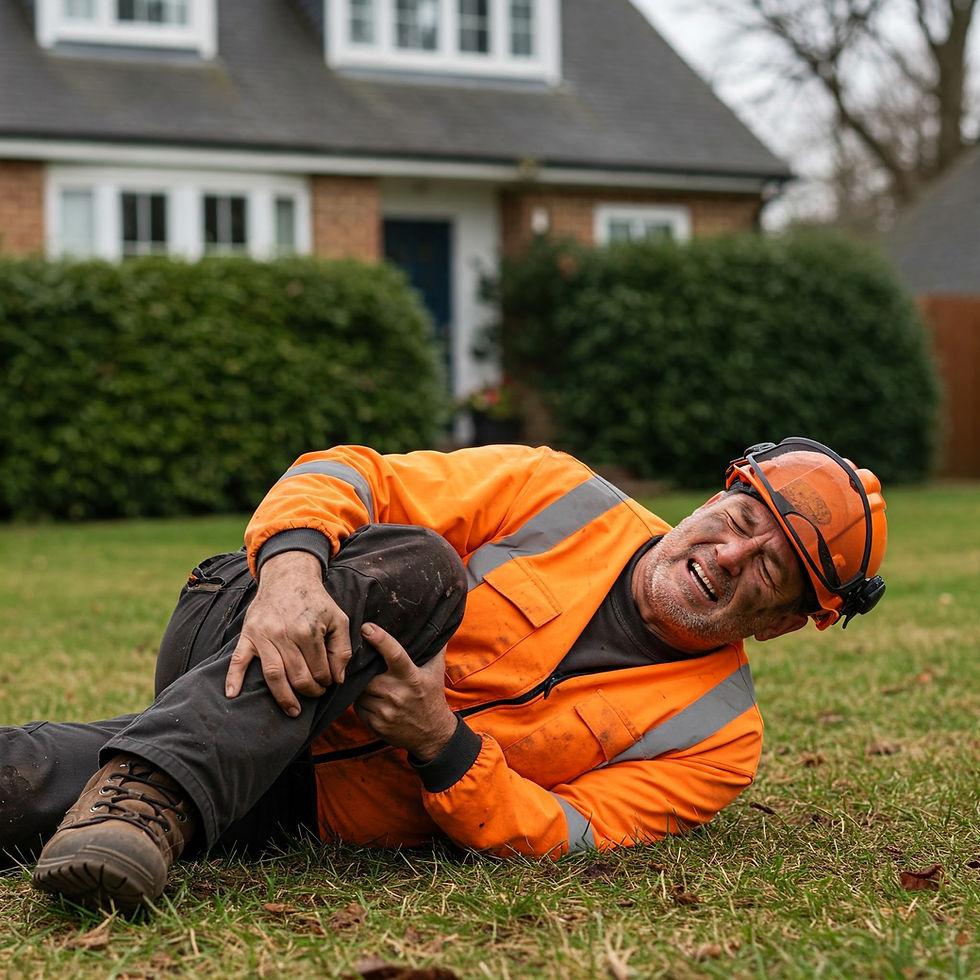Tree disease management.
- Alonzo Perez
- Feb 6, 2024
- 3 min read
Updated: Feb 17, 2024
When we think of tree diseases, large mushrooms or a half dead tree often come to mind. However, fungal issues and different diseases can present themselves in various forms, from subtle powdery substances on leaves, tiny spots on leaves or crown dieback.

Identifying Tree diseases
Tree diseases manifest themselves in diverse ways, making identification crucial for effective management. Look out for signs such as powdery substances on leaves, small spots on needles, lesions on fruits and leaves, missing foliage in the canopy or bark peeling. Understanding these symptoms is the first step in addressing tree problems.
Common Tree Diseases
There's a long list of tree diseases that affect different tree species, some more susceptible to to others and others host specific, each with its unique characteristics and management requirements.
Some common tree diseases include:
Cytospera Canker in Conifers: This disease causes cankers on conifer trees, leading to branch dieback and decline.
Black knot disease (common in Cherry trees and even more common in Plum trees)
Needle Cast in Conifers: Characterized by the premature shedding of needles, needle cast can impact the health and aesthetics of coniferous trees.
Bleeding Cankers: These cankers ooze sap, indicating fungal infection and potential structural damage to the tree.
Apple Scab: Affecting apple trees, this fungal disease results in scab-like lesions on leaves and fruits, reducing yield and quality.
Anthracnose: Anthracnose affects a wide range of trees, causing dark, sunken lesions on leaves and stems.
Powdery Mildew: This fungal disease forms powdery white patches on leaves, affecting plant vigor and aesthetics.
and more
Management Strategies
Managing tree diseases requires a multifaceted approach that may include cultural practices, sanitation, and targeted treatments such as:
Pruning infected branches with sanitized tools to promote airflow and reduce spread of disease.
Remove fallen leaves and debris to minimize fungal spores' presence.
Applications of fungicides and/or treatments to minimize spread of disease and increase tree health.
Enhance tree vigor through proper watering, fertilization, and soil management practices. Just like a healthy person may better tolerate a sickness, the same applies to trees.
Monitor trees regularly or have a ISA Certified Arborist evaluate your trees for early signs of fungal diseases and take prompt action when necessary.
Tree problems are most effectively managed when detected early before they cause greater irreversible damage.
"How much do tree treatments cost?"
First, we'll want to make sure that the tree in question is a candidate for treatment. Otherwise we might be treating a unsalvageable tree. The cost for treatment of tree diseases vary depending on the specific disease targeted, tree size, required control method, treatment application method, the number of trees treated, and the number of applications needed.
Treatment applications start a $149 for one tree depending on size or multiple smaller trees.
The cost of treatment is often justified when considering the value that trees contribute to the overall property and the potential costs of not taking action.
Tree diseases pose significant challenges to tree health and vitality, but with proper identification and management strategies, their impact can be minimized.
Remember, early detection and proactive management is key to mitigating the effects of fungal tree diseases and preserving our valuable trees.
If you suspect your trees are affected by a diseases or you need professional assistance, contact us to schedule a consultation with our ISA Certified Arborist and discuss effective management solutions tailored to your trees' needs.














Commentaires